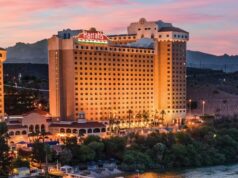NATIONAL REPORT—Most people do not believe there is a serious shortage of potable domestic water in the United States. Because of our massive natural resource of fresh water, to some degree they are correct. While the problem may not be a shortage of water overall, the more serious problem is that much of the water is not in the major metropolitan areas where most of it is consumed. For example, you will never convince hotel operators in Florida, Southern California and Arizona that there is a sufficient supply of water, because they are already experiencing droughts and shortages.
When these droughts and shortages occur, only two things can happen: Water conservation must be implemented, or fresh water must be transferred from other portions of the country to the more arid areas. An example of this is Southern California, which draws much of its fresh water via river systems from the Rocky Mountains and other Midwestern aquifers, making this a very dynamic problem. As with energy conservation, there are countless ways hotel operators can conserve water without adversely effecting guest comfort whatsoever.
When our company conducts an energy audit, the first things we look at are consumption indexes. We have learned that a limited-service hotel should consume about 3,500 cubic feet of water per guestroom, per year. A full-service hotel should consume about 6,500 cubic feet of water per guestroom, per year. One can determine the annual consumption index for a hotel by simply adding up the consumption as indicated on 12 consecutive water bills and dividing that total consumption by the number of guestrooms. The net result will give you an idea whether your hotel is consuming an excessive amount of water. To minimize water consumption, there are a number of actions that can be undertaken.
In Your Guestrooms
The guestroom, obviously, is one of the highest water consuming areas of the hotel, primarily because of the bathrooms which have a shower, toilet and sink. It is hard to believe, but we still encounter hotels that use showerheads that consume up to 5 gallons of water per minute. National standards now require that all showerheads in hotels consume no more than 1.75 gallons per minute. This can be examined by placing a bucket under each showerhead and running the water for 60 seconds to determine the flow rate. Also, notice when the shower diverter is turned on if any water is also pouring out of the spigot into the tub. If this is occurring, this is an indication that the diverter needs to be repaired immediately. And it is a very wasteful use of water and the energy to heat it.
Older water closets or toilets consume as much as 3 to 4 gallons of water per flush. Water standards now require that toilets consume no more than 1.6 gallons per flush. This can be accomplished by installing new toilets, or by installing a new flapper valve kit that will actually reduce the water consumed by an older toilet. Frequently, these kits do not work effectively and it might be simply a good idea to start budgeting for toilet replacement, if you have the old style.
Flow rate at bathroom sinks should not exceed one gallon per minute. This can be reduced by installing an aerator that injects air into the water, causing an illusion of more water flowing. Aerators cost as little as one dollar each. Alternatively, the hand valves on the supply lines under the sink can also be adjusted downward to a minimum, but acceptable, flow. This will conserve water and the energy to heat it.
Landscape Watering
Almost all types of hotels these days have landscaping around the property that needs to be irrigated on a regular basis. First, it is recommended that an automatic sprinkler system be installed that utilizes a time clock to automatically turn water on and off, while measuring the amount consumed. This can be somewhat costly, but eliminates many labor problems. If you use the old-fashioned sprinkler systems instead of an in-ground irrigation system, you may want to consider switching to a soaker hose, which provides much more adequate watering without evaporation.
Remember that all water used for irrigation of any type is eligible for a sewer credit. About half of the cost of domestic water includes the cost of sewer to dispose of it. Because the water evaporates, it does not enter the sewer system. Install an inexpensive water meter and make arrangements with your water utility to obtain this credit. It could save as much as $1,000 per year. Typically, water costs up to $10 per hundred cubic feet.
Phil Sprague is a member of the AH&LA Executive Engineers Committee and president of PSA Hotel Energy Consultants. Based in Minneapolis, PSA Hotel Energy Consultants assists lodging companies and individual properties to develop effective, cost-saving energy strategies by auditing and assessing all energy consuming devices and appliances, and delivering comprehensive, customized recommendations in an actionable format. They can be reached at 952-472-6900.
This article first appeared in The Rooms Chronicle, Vol. 15, No. 4. Additional water-saving information can be found in part two of this article. Click here to read that article.







